
TOUR DATES
BIRMINGHAM REP
Sat 18 Mar – Sat 8 Apr

birmingham-rep.co.uk
CAMBRIDGE ARTS THEATRE
Wed 19 – Sat 22 Apr
cambridgeartstheatre.com
MALVERN THEATRES
Tue 25 – Sat 29 Apr
malvern-theatres.co.uk
THEATRE ROYAL BATH
Tue 2 – Sat 6 May
theatreroyal.org.uk
LEEDS PLAYHOUSE
Thu 11 – Sat 27 May

leedsplayhouse.org.uk
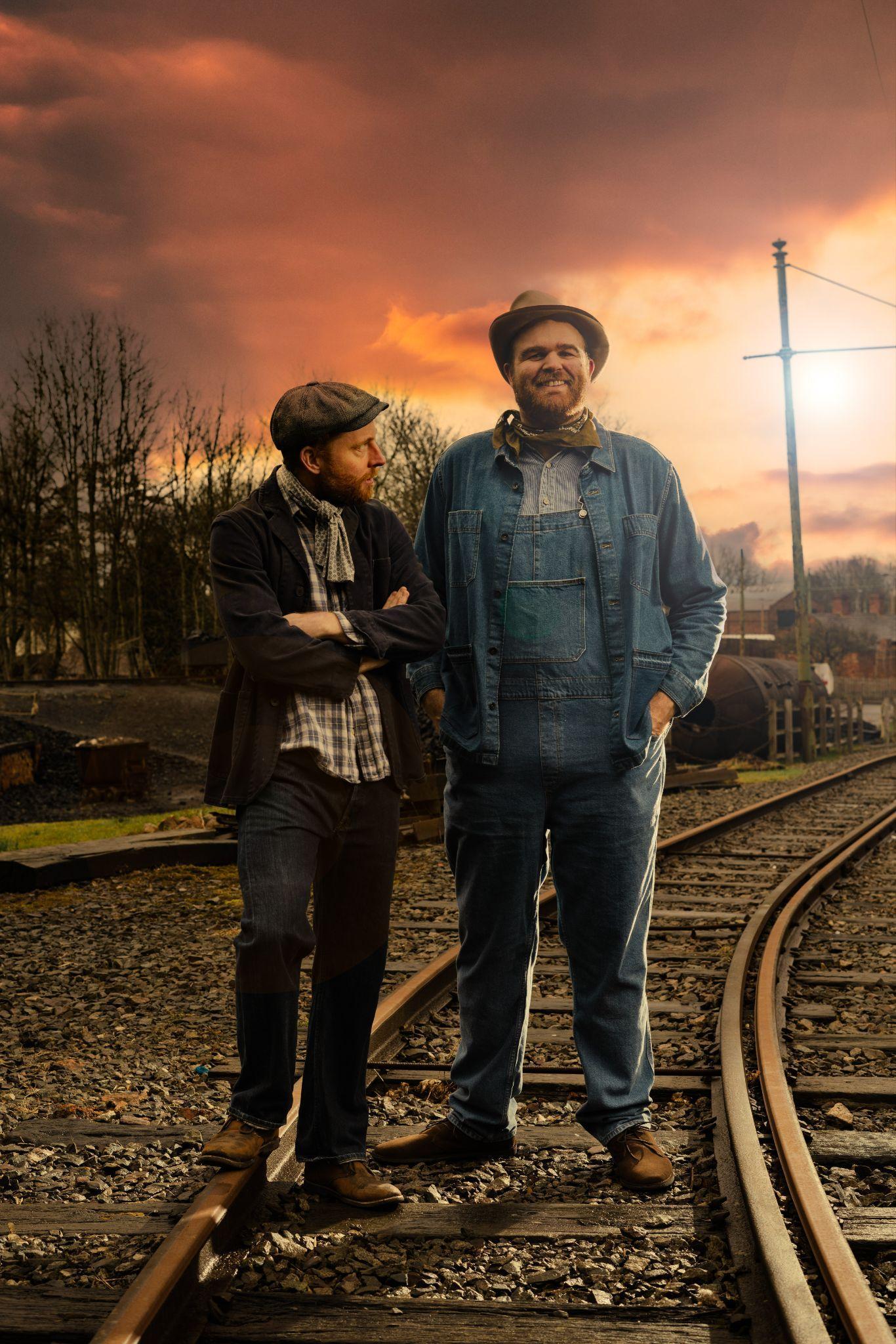



CONTENTS PAGE INTRODUCTION 4 SYNOPSIS 5 TRAILER 5 THEMES (Contains plot spoilers) 6 ARTICLE ON THE GREAT DEPRESSION 8 INTERVIEW WITH IQBAL KHAN, DIRECTOR OF MICE AND MEN 10 INTERVIEWS WITH CREATIVES AND CAST 12 CAST AND CREATIVE TEAM 14 REHEARSAL PHOTOGRAPHY 15 SET DESIGN 17 WORKSHOP PLANS 18 TERMINOLOGY AROUND DISABILITY 27 THE SOCIAL MODEL VS. THE MEDICAL MODEL OF DISABILITY 28 BSL ON STAGE 30 DISABILITY ON STAGE TIMELINE 32 PLAY EXTRACTS 33 PSHE LEARNING OUTCOMES 44 2
INTRODUCTION
Welcome to the resource pack for The Rep’s production of Of Mice and Men. A story of enduring friendship, this new production from Rep Associate Director and Commonwealth Games Opening Ceremony Director, Iqbal Khan, focuses a 2023 lens on John Steinbeck’s affecting tale of the crumbling American dream

Whether you are a teacher searching for a dynamic teaching resource as part of your curriculum, someone considering a career in theatre, or a theatre enthusiast interested in doing further research to accompany watching the play, this pack is for you
The resource will guide you through the production process, the cast and creatives involved, and the themes and issues explored throughout the play.
This resource contains:
● Information to aid the exploration of key themes in the play:
○ E g economic migration, racism, the American Dream, friendship
● Lesson plans
● Useful links to resources and support that can be shared with students
● Accessible Arts specific resources to delve into this historic production which sees the first Learning Disabled actor playing Lennie on The Rep’s stage.
At the end of the pack you can find details as to which PSHE curriculum outcomes the lesson plans link to as set by the PSHE Association
CONTENT ADVICE: Please note, this resource pack covers sensitive content including racism, ableism, sexism, violence, assault, murder, death, plus some strong and offensive language
If you would like to read more about any of these specific topics, please visit our content advice webpage here.
3
SYNOPSIS
“I got you, and we got each other”
George and Lennie are migrants with a dream; a dream of a better life, a place where they can belong, where Lennie feels safe and George can be somebody But this is the Great Depression, not many dreams come true in a time where a few have plenty but most have nothing When the friends take a job on Curley’s family farm, tragedy unfolds leading to a heart-breaking decision
John Steinbeck’s classic novel is more than 80 years old, but with themes of economic migration, racism and prejudice, it remains a parable for our times

TRAILER
https://www.youtube.com/watch?v=o_qVsCqjBWQ
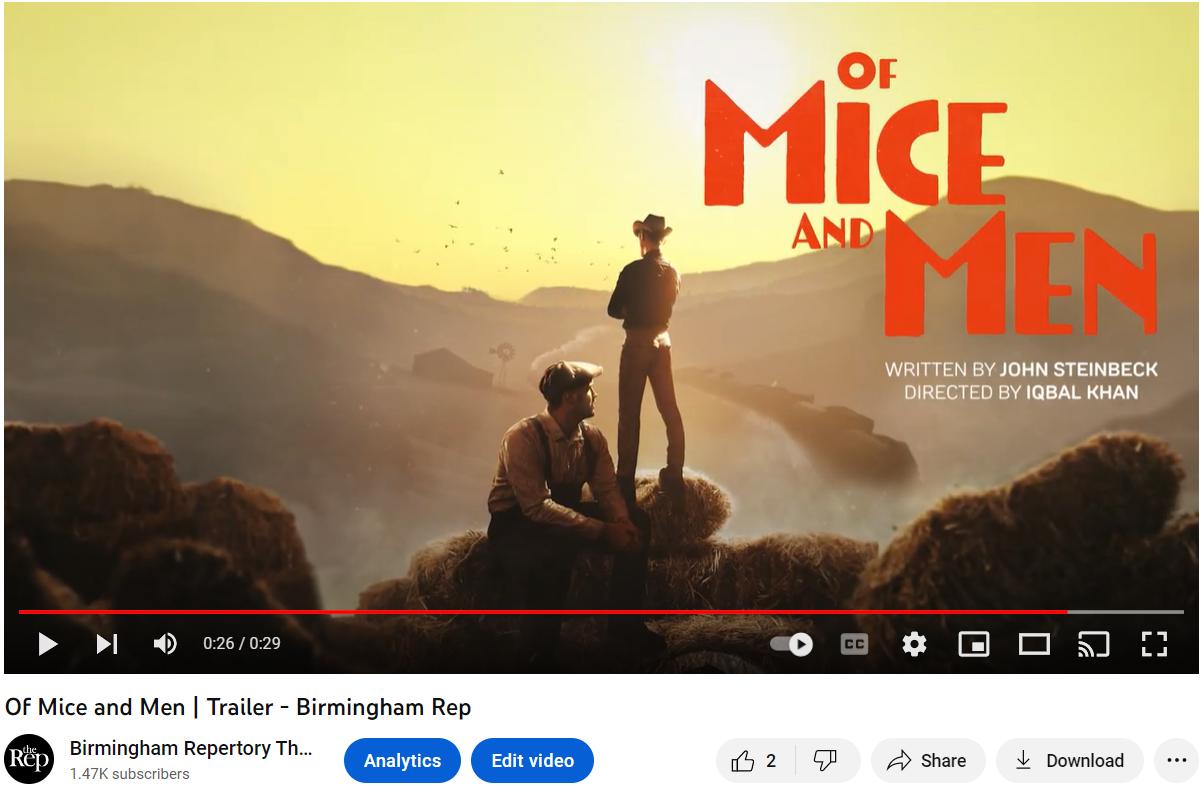
4
THEMES (Contains plot spoilers) ECONOMIC MIGRATION

In 1929, The Wall Street Crash heralded the beginning of The Great Depression in the US and around the world. Whole cities and communities were hit by a huge fall in stock prices. Particularly hard-hit were farming communities in rural areas who saw crop prices fall by as much as 60% To make matters worse, in 1931 severe droughts hit the Midwestern Plains As crops died and winds picked up, whole harvests were literally blown away into dust in what became known as “the Dustbowl”
Left with no alternative, thousands of “Dustbowl migrants” – mostly from Oklahoma, Texas, Colorado, Kansas, and New Mexico – packed up their meagre possessions and migrated west, hoping to find work and a better life. Around 20,000 of the migrants headed for California which quickly became overwhelmed by the thousands of destitute people crossing its borders daily
In the play, Lennie and George are two such migrants who find themselves on Curley’s farm looking for work Economic powerlessness is a major theme as many of the farmhands we encounter have all been greatly affected by The Great Depression While characters like George, Candy and Crooks still hold steadfast to the idealised “American Dream” of making enough money to buy a homestead of their own, due to the Depression, they are unable to generate enough money and are doomed to repeat the vicious cycle of migration, seasonal work and poverty again and again
RACISM
The play is set in 1930s America at a time when racism was rife White people and black people were segregated and black people were considered second class citizens. Black people were paid less than their white counterparts and they had to work harder than everyone else, often given the 'dirty work' The lynching (hanging) of black people was also common at this time and The Klu Klux Klan were still very powerful
Almost immediately after arriving at Curley’s farm, George and Lennie meet Candy, who shows them the racial divide when talking about the black stable buck, Crooks This powerfully reflects the racial discrimination of 1930s America Crooks is not allowed to play cards with the other farmhands or even enter their bunk because of the colour of his skin. At one point, Curley’s wife even threatens to have Crooks lynched because he was not being polite to her when he orders her to leave his room and Crooks has no choice but to simply answer “yes ma’am” as he fears for his life
THE AMERICAN DREAM
The American Dream is the ideal that every citizen of the United States should have an equal opportunity to achieve success and prosperity through hard work, determination, and initiative It is this aspiration that drives many of the characters we meet in the play: George aspires to become independent and, most importantly, to “be somebody”, Candy aspires for security in his old age, and Curley’s wife aspires to become an actress and to end her loneliness in her marriage to Curley. As the events of the play unfold, however, we see how the failure of The American Dream has led to a situation with so many desperate men
5
scrabbling for work and the tragedy that occurs when those who are less able, namely Lennie, are unable to be looked after properly by the community around them
FRIENDSHIP

"A guy goes nuts if he ain't got anybody
”

Many of the characters we meet in the play are lonely and crave friendship: Candy’s dog has died, Curley’s wife is lonely in her marriage to her abusive husband, and Crooks is left isolated from the other farm hands because of the colour of his skin George and Lennie’s friendship is therefore rare The two have a sense of connection with each other despite their marked difference in stature and intellect and, while the other characters may feel alone, they have each other to rely on. Even in their final, tragic moments together, George wants to protect Lennie from the baying lynch mob Out of kindness and loyalty to his friend, who would surely have suffered a painful and horrific death otherwise, George chooses to shoot Lennie in the back of the head as he describes for him the homestead the two of them had imagined owning together.
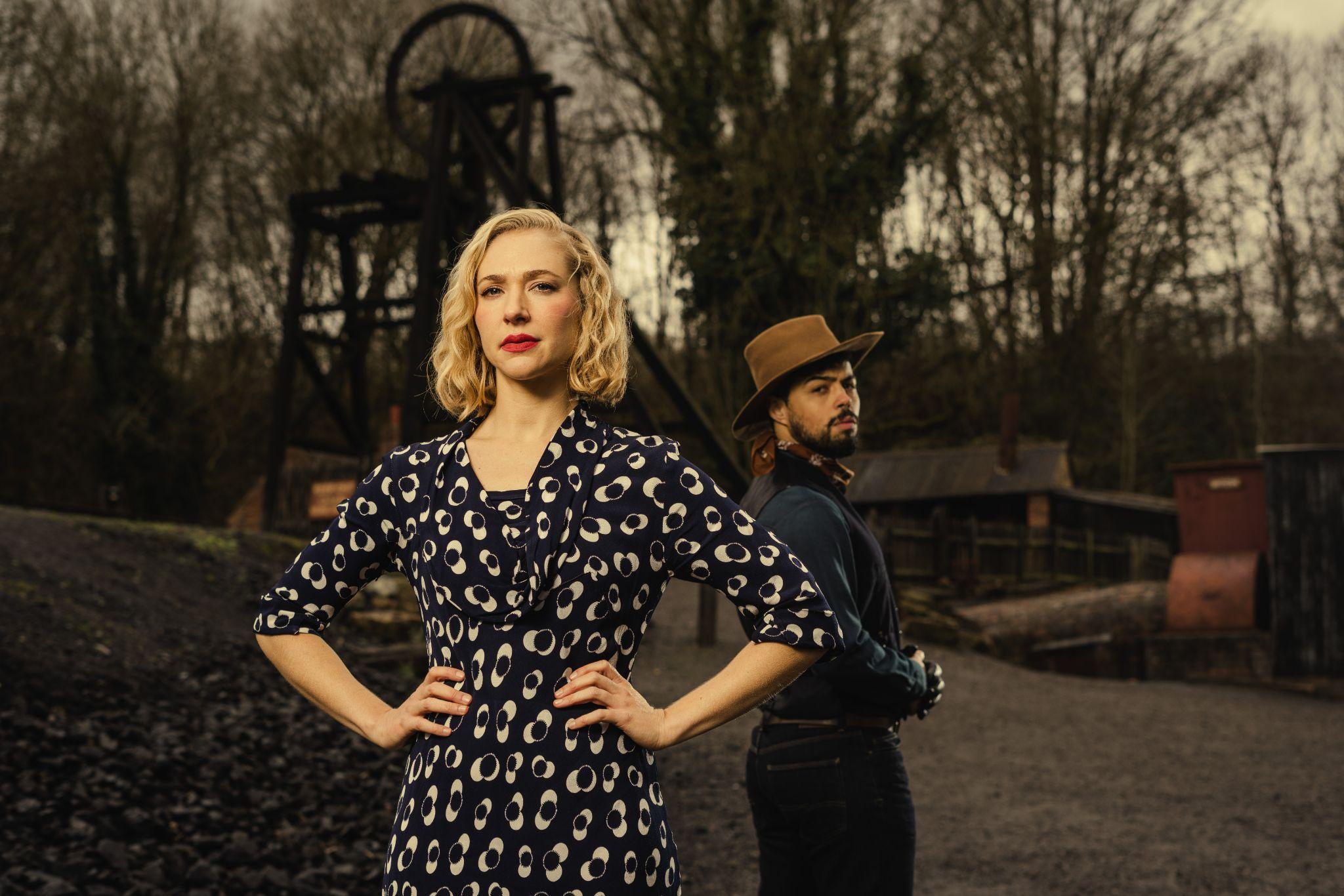
6
ARTICLE ON THE GREAT DEPRESSION
BY MICHAEL DAVIES
Just A Little Bit Of History Repeating
“It feels like every day is doomsday.”

Food bank user quoted in The Guardian
It’s a well-known theory that history repeats itself As writer and poet Steve Turner argues, it has to Because nobody listens the first time around So what might history be telling us about the current cost-of-living crisis? And where could we look to draw lessons and – just maybe – a crumb of comfort about what might happen next?
The obvious answer would seem to be the United States in the wake of the great banking crash of 1929, which was followed by more than a decade of hardship, trauma and re-evaluation of itself as a nation It was a period that became known as The Great Depression and formed the backdrop to John Steinbeck’s groundbreaking 1937 novel Of Mice and Men - the parallels with our modern world are striking
America’s financial fortunes had been struggling for several years before the stock market finally hit the buffers on Black Tuesday, October 29th 1929 A recession kicked in with a vengeance as businesses closed, unemployment rocketed and banks went bust, and America began recalling its extensive loans to Europe, prompting a worldwide financial crisis Over the next two or three years, industrial production fell by 45 percent, house building plummeted 80 percent, and as many as 5,000 small banks went belly-up as customers withdrew their savings or defaulted on loans and mortgages
In 1932, Democrat president Franklin D Roosevelt swept to a landslide victory promising a New Deal, with huge infrastructure projects, much-needed job opportunities and a new approach to social welfare Famously announcing that “the only thing we have to fear is fear itself”, he launched a series of radio broadcasts, which became known as FDR’s “fireside chats” and helped restore confidence
But a perfect storm of trouble was just around the corner. A series of droughts spread an infamous dust bowl through the all-important farming regions of the Midwest – giving Steinbeck a powerful metaphor for his characters George and Lennie as they cross a desolate America in search of hope In real life, migrants headed to California in droves, hoping for better prospects there, but were turned back by protectionist locals Many of these homeless refugees ended up in one of the vast makeshift camps built from cardboard and scrap metal that emerged in the Californian valleys
Recovery took years. The economy picked up between 1933 and 1936, but another recession hit the following year – prompting Steinbeck to take up his pen – and it would require the outbreak of war to finally spark an expansion of manufacturing
Some of the parallels are clearer than others. Since the banking crisis of 2007-2008, the UK has faced a succession of setbacks that have, between them, conspired to create the worst social circumstances for decades According to Forbes magazine, inflation at a near 40-year high has led to an increase in living costs for more than nine out of ten adults so far in 2023
7
Energy prices continue to soar – at the same time as energy companies announce record-smashing profits – and the divide between rich and poor grows ever wider
In the decade and a half since the crisis, Britain has had to deal with the political policy of austerity, the self-inflicted division of Brexit, the global natural catastrophe of Covid, the Russian invasion of Ukraine and a series of scandals and unrest at the highest levels of government that have seen four incumbents of Downing Street in as many years Small wonder, then, that the post-pandemic picture looks as grim now for huge sections of the population as it has done in living memory
The Institute for Government reports that the fall in ‘real’ disposable incomes – that is, adjusted for inflation and after tax and benefits – has hit households on low incomes disproportionately, in spite of government assistance in the form of additional payments “These are not sufficient to match the increase in energy and other costs,” says the independent thinktank, adding: “On average they are still worse affected by the crisis.”
For America in the 1930s – although no help to George and Lennie – Roosevelt’s radical New Deal started the country down a long but ultimately successful road to recovery and prosperity Government intervention happened on a scale the country had never seen, from building dams and hydro-electric power stations to establishing social security for the first time While he introduced financial reforms, his wife Eleanor championed minority rights and the country underwent a transformation in the way it saw itself and its leaders.
In Britain today, many will say that it still feels like we’re in the heart of the tornado The aftershocks of Brexit, Covid and Putin’s invasion will be with us for many years to come, and there’s little sign of significant economic recovery in the near future. Meanwhile, social inequality continues to grow by almost every measure, driving an increasing dissatisfaction with the way things are run across large swathes of the population
Perhaps Steinbeck’s masterpiece provides a timely warning that we need a Roosevelt and not a war to instigate a change in the nation’s fortunes

Michael Davies
© John Good
8
INTERVIEW WITH IQBAL KHAN, DIRECTOR OF MICE AND MEN
 BY KERRY ENDSOR
BY KERRY ENDSOR
Rep Associate Director, Iqbal Khan, talks about Of Mice and Men and explains why this story, which is more than 80 years old, remains a parable for our times
When Iqbal Khan was growing up in Birmingham, the divisions and barriers to cultural experiences he encountered as a young man led him to leave the city in order to follow his dreams
Fast forward a few decades and Iqbal, an award-winning director, has worked extensively with the RSC, directed productions in Paris and Japan and held residencies in America Throughout his work, he has remained committed to telling epic stories in a poetic way, with a particular passion for bringing rich and inclusive experiences to the city he once called home.
As an Associate Director of Birmingham Rep, an Associate Artist of Box Clever Theatre Company, and the Artistic Director of the 2022 Commonwealth Games Opening Ceremony, he has unequivocally delivered on this promise
Iqbal’s most recent Birmingham Rep productions, East is East and Tartuffe, received wide-spread critical acclaim, and he is now turning his attention to bringing Steinbeck’s classic tale of the crumbling American dream to life
When asked why he wanted to tell this particular story, Iqbal explained it was the characters who attracted him to Of Mice and Men
“Of Mice and Men is, at its heart, a parable of the outcast, the underdog, the marginalised and the broken. It tells a story of the Great American Depression of the 1930s, when the world was cast in darkness and uncertainty, when people were lost and the American dream of community seemed shattered; Steinbeck was unafraid to show the cruelty and desperation in the lived experience
I was particularly fascinated by the fact that the story wasn’t told through the lens of those who make or shape the world, but by those who suffer the consequences of those actions”
Steinbeck’s novella has, over the years, attracted controversy for the way these characters are depicted, and the brutality of the language and actions directed at them, but Iqbal interprets this differently
“Steinbeck had a massive, unsentimental compassion for all the characters he introduced us to. These include Curley’s Wife, the only woman on a ranch of men who objectify and avoid her; Crooks, the sole Black man maimed by misuse and abuse; and Candy, an older ranch hand disabled by his work whose only companion is a dying dog All are fractured and ache under the weight of lives dominated by back-breaking work from sunrise to sundown
9
Yet into this world come our two lifelong companions, George and Lennie Theirs is an unlikely brotherhood in which George parents and protects Lennie from those who see him as ‘slow’, ‘dim-witted’, maybe even ‘crazy’, when all he wants to do is pet soft things and dream of tending rabbits
There’s a real tenderness that vibrates throughout this tale A fragile hope of new community that others ache to share. As those who have read the book will know, the story ends tragically but with an act of love that is so terribly moving. ”
What sets this production apart from previous versions of the Steinbeck classic, is very clear to Iqbal

“We’ve assembled an extraordinary, inclusive company of actors that embrace the lived experience of these characters They understand profoundly how their visible otherness has excluded them from opportunity and that brings a depth and vulnerability to the production that is difficult to put into words. It is a privilege to discover the great truths of this timeless and enduring piece with them. ”
Whilst Iqbal acknowledges there are challenges involved with bringing a story set in a different time to life, he is struck by the familiar themes that permeate throughout the production. Economic migration, racism and prejudice, but also friendship and the dream of a better life, which are still as relevant today as they were in the 1930s
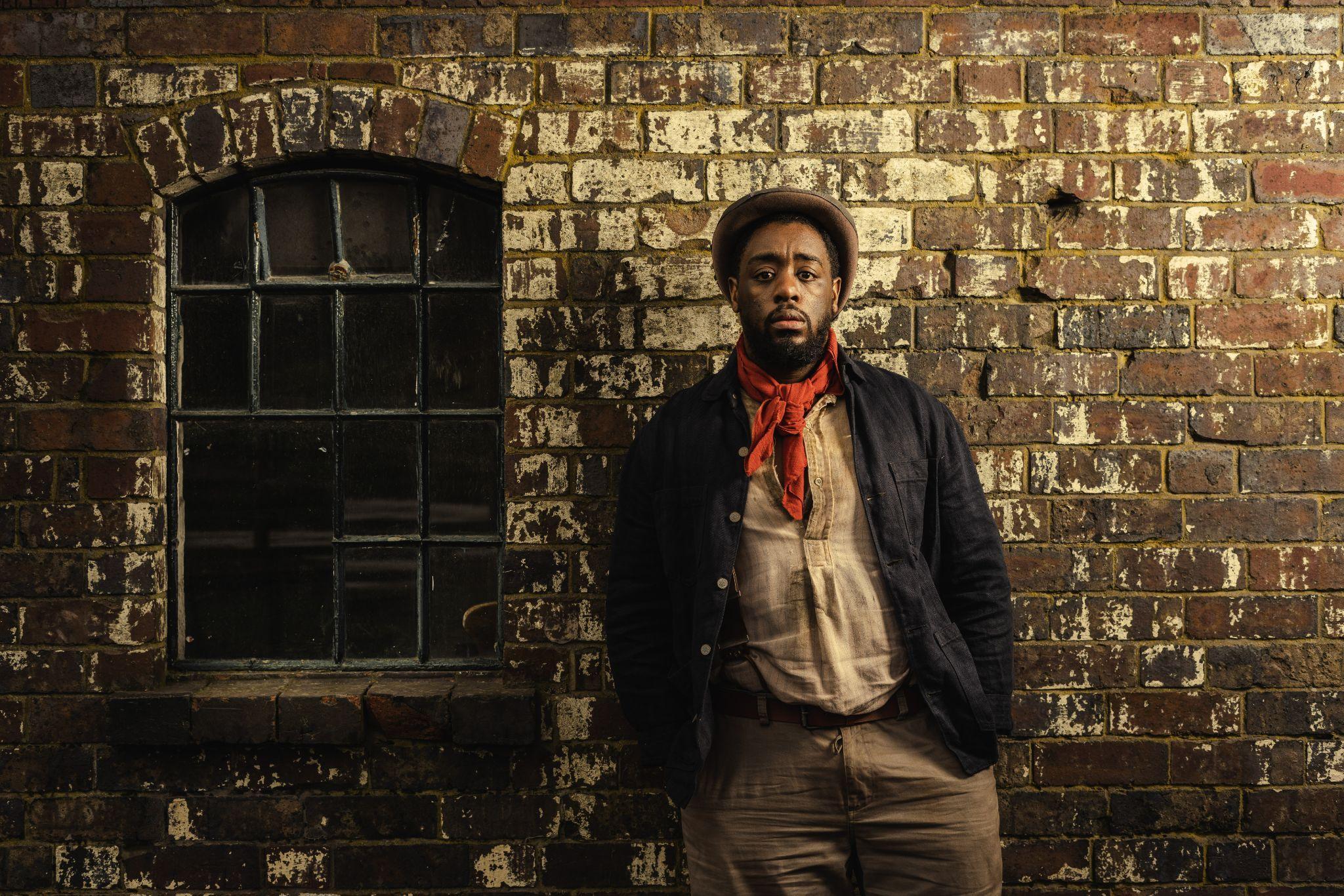

Dreams are an integral theme weaved throughout the production - hopeful dreams, shared dreams, shattered dreams – they all make an appearance.
The irony of telling a story about following dreams isn’t lost on Iqbal He has returned to his home city - a city he left many years ago in pursuit of a dream – to tell a beautiful story in an inclusive way, inspiring future generations to follow their own dreams, wherever they may lead.
“At a time when we feel the grip of uncertainty, a fear of engaging with the unknown, and when so many are dispossessed and isolated, this beautiful story continues to speak to our dream of solidarity with others, to own our paths and enjoy the fruits of our labour” .
10
INTERVIEWS WITH CREATIVES AND CAST
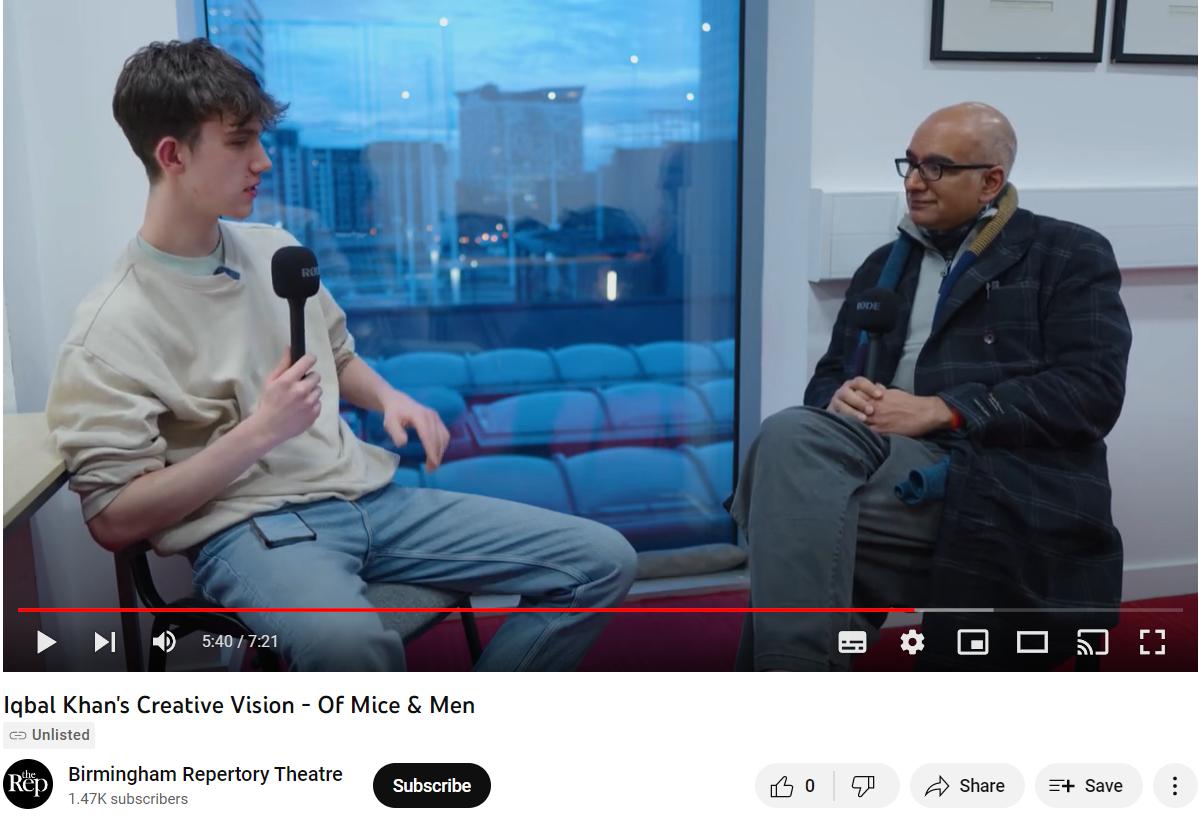
IQBAL KHAN’S CREATIVE VISION
https://youtu be/orPl58YA9o0

SIMON DARWEN (SLIM) AND LEE RAVITZ (CANDY) DISCUSS OF MICE AND MEN
https://youtu be/K-4088qTOf4
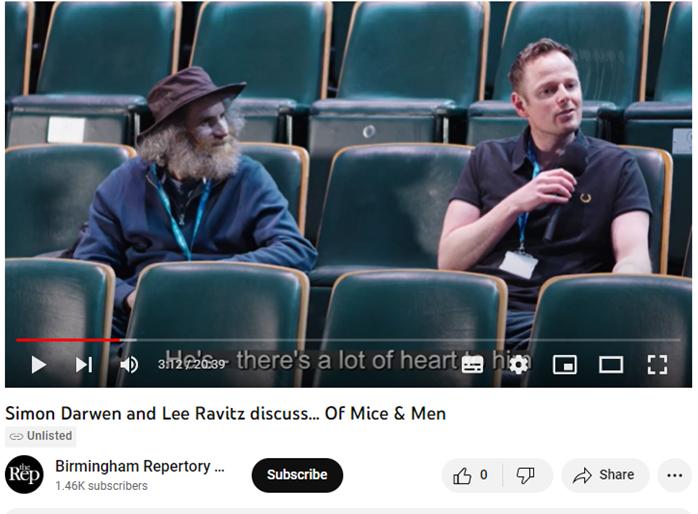
11
TOM MCCALL (GEORGE) AND WILIAM YOUNG (LENNIE) DISCUSS THE ACTING PROCESS
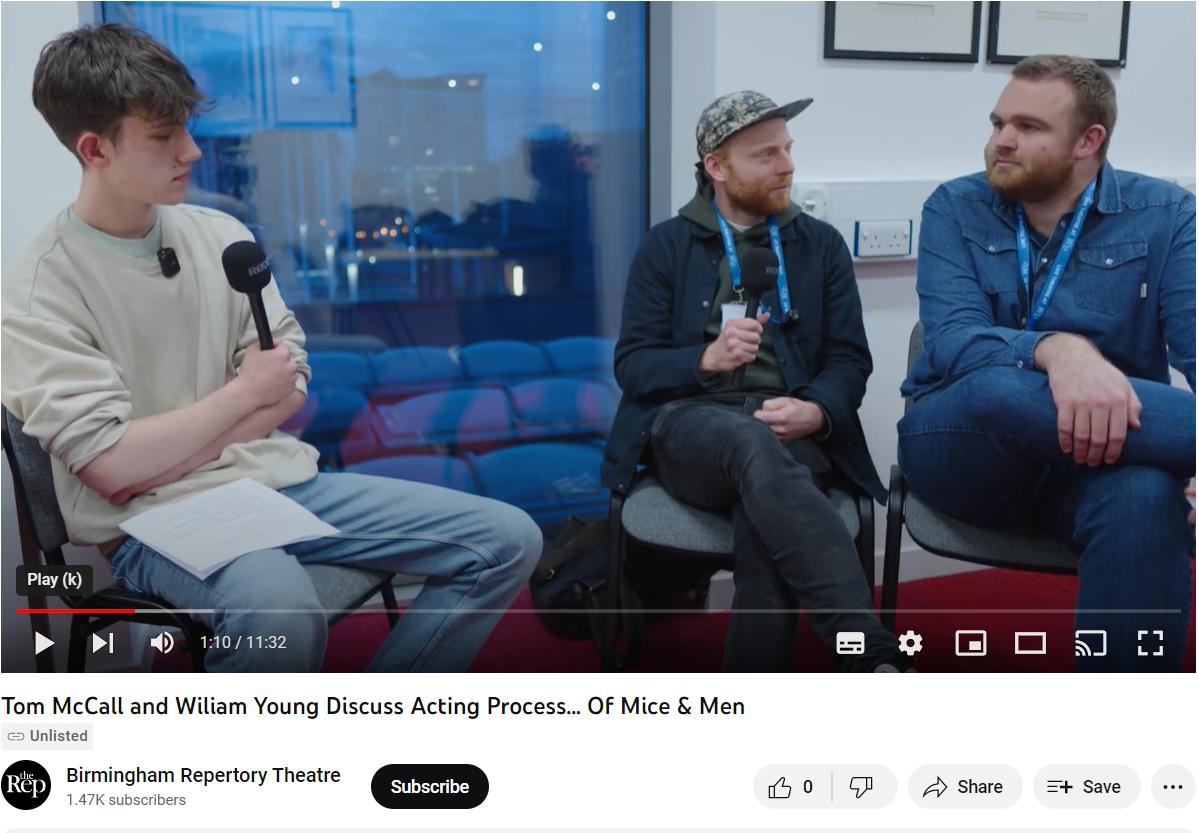
https://youtu be/NlLxIflMcGk
REECE PANTRY (CROOKS) AND MADDY HILL (CURLEY S WIFE) DISCUSS OF MICE AND MEN

https://youtu be/9gW7KHpSOZ8

12


13
CAST AND CREATIVE TEAM
REHEARSAL PHOTOGRAPHY

These photos were taken during rehearsals for the production by Mark Senior
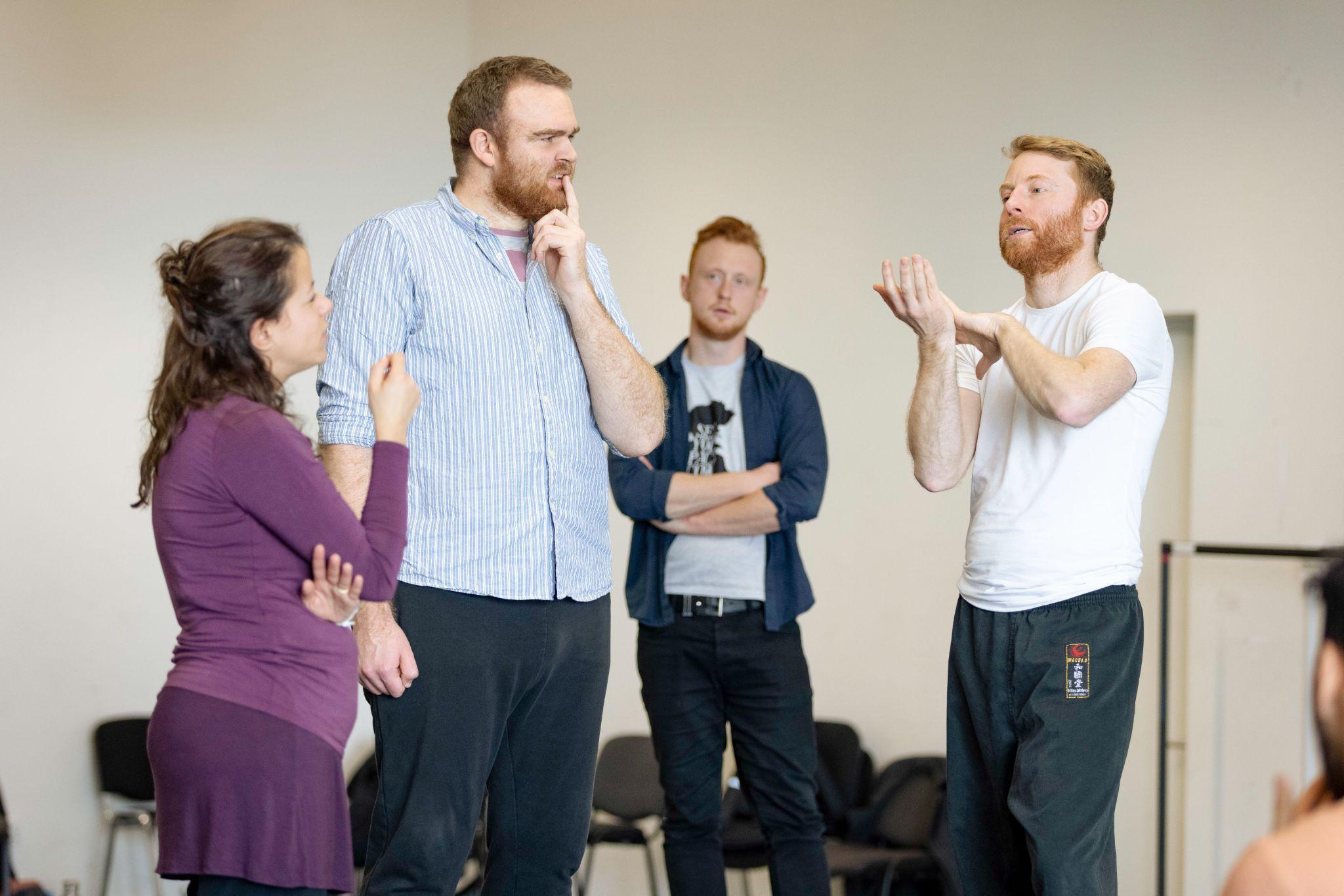


14

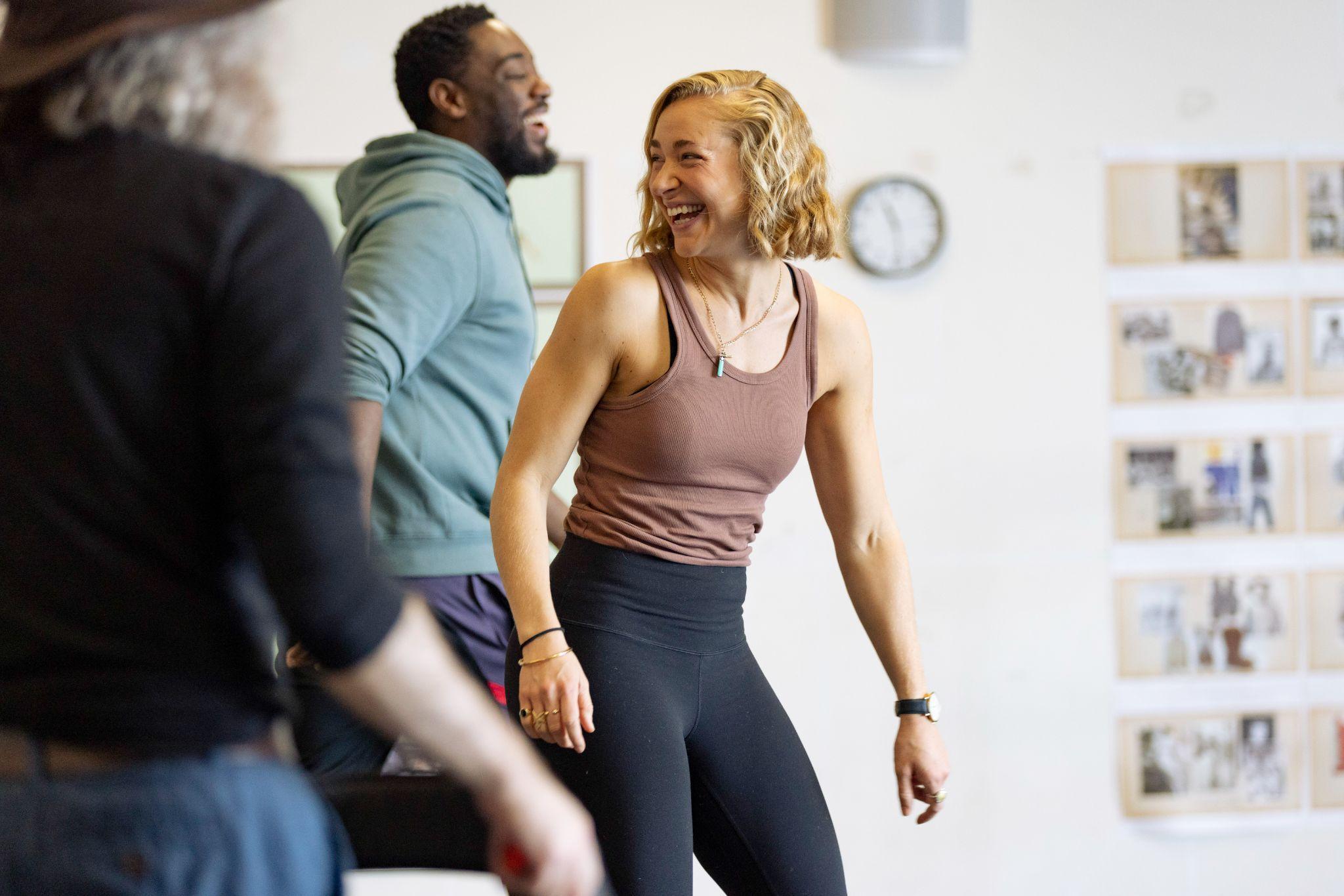
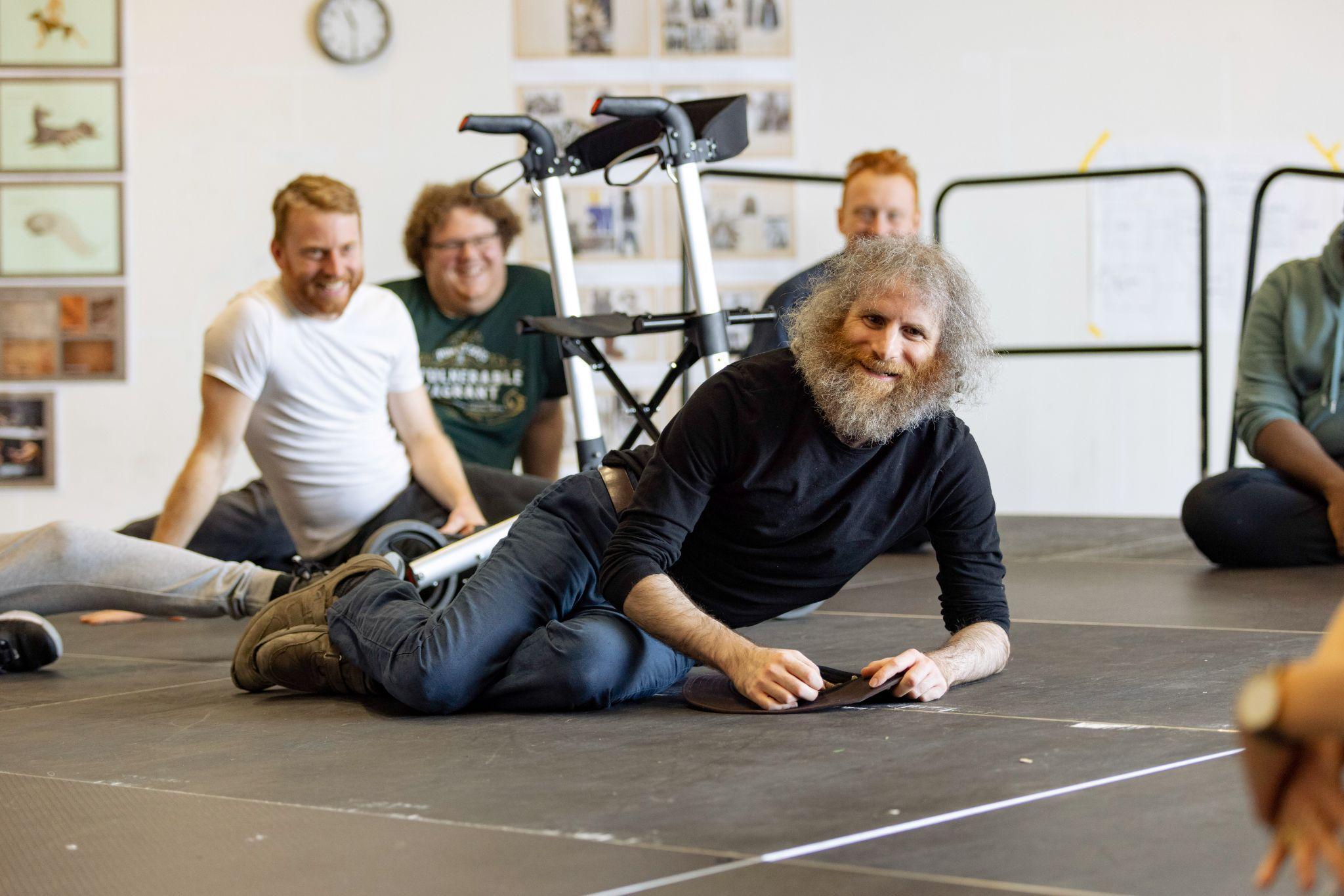

15
SET DESIGN
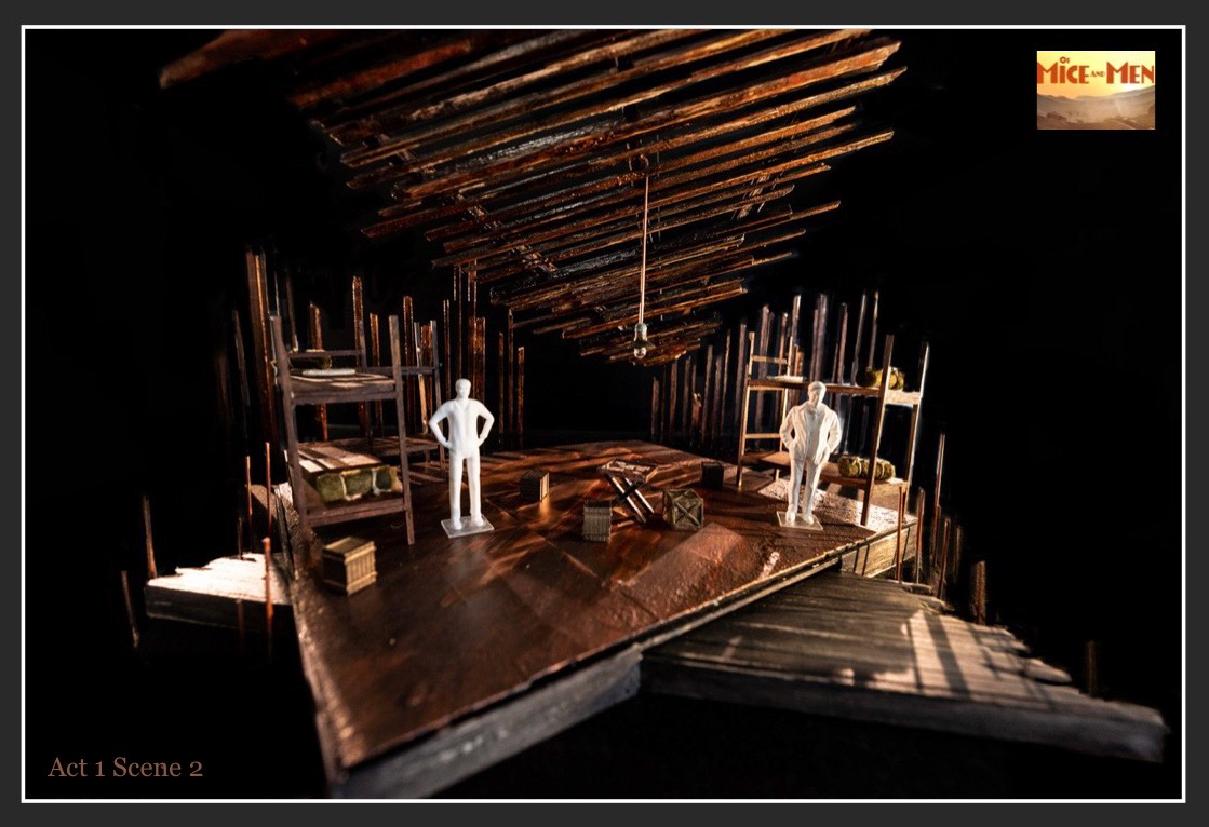

The Of Mice and Men Birmingham Rep production of 2023 had its set designed by Ciarán Bagnall.
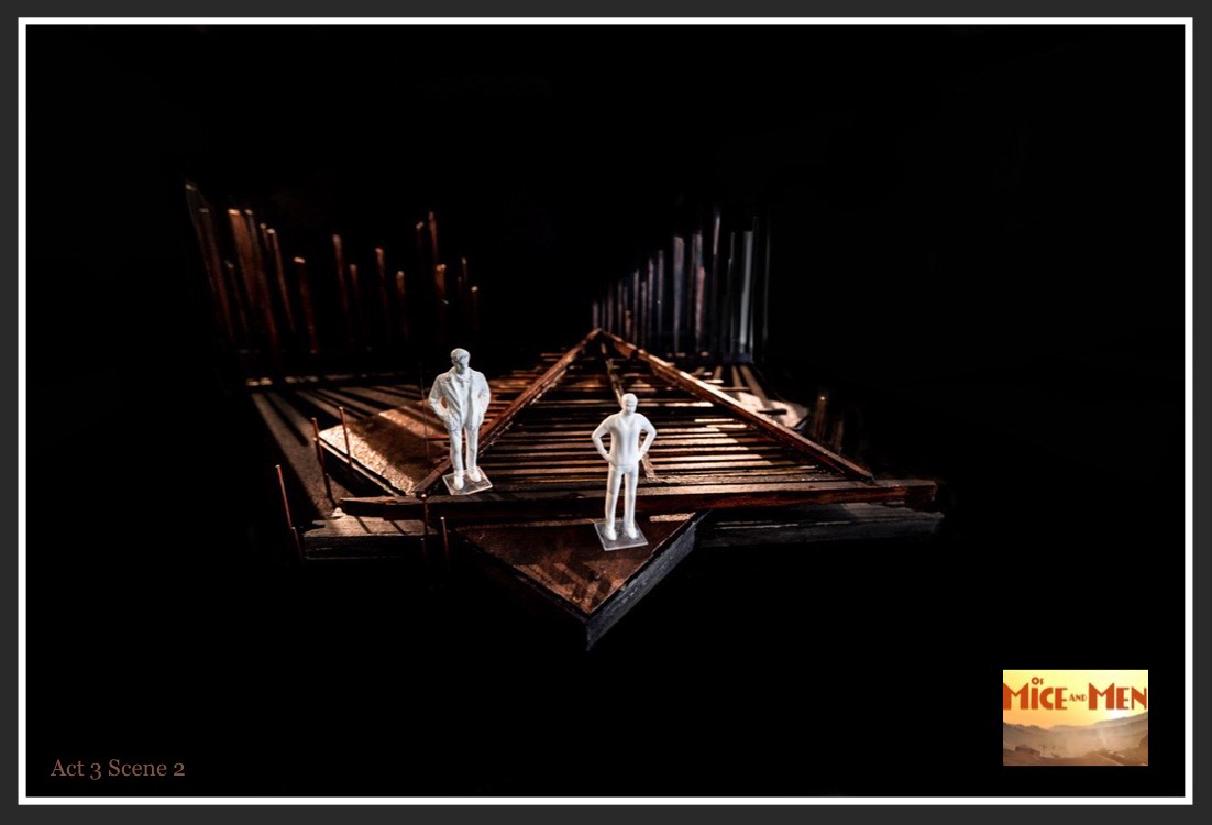


Ciaran is a professional Lighting and Set Designer with over twenty five years experience in theatre design He is based in Belfast, and as well as being a freelance Lighting and Set Designer, he is the Creative Director of Prime Cut Productions
http://wwwciaranbagnalldesign com/
16
WORKSHOP PLANS
Below are three different workshop plans designed for KS3 and KS4 students that explore the themes within the play The workshop plans are a fantastic resource for teachers to use within classroom settings and can be adapted to meet the needs of your young people
Workshop 1: Discrimination
THEME: Discrimination
Time: 1hr
Learning Objective: To explore themes of discrimination within the text of Of Mice and Men
All Must: Engage in a competition, with simple tasks - that emulates a segregated society
Most Should: Reflect on the game and draw empathy for characters in Of Mice and Men

Some Could: Make observations between the game, segregation in the play, and modern-day society.
Set-Up Divide the classroom using tables/rope
¾ of the room should be allocated to the ‘Green’ team, and ¼ to the ‘Red’ team If possible, the Green side of the room should be nicer (windows, radiators, aircon etc )
Prepare Green and Red papers, in a hat. The ratio should be 1:3 (Green:Red), so that most students will pick Red.
Choose something to use as ‘currency’ - marbles, tokens, counters etc.
0-10
Introductions
As students enter, they pick a colour from the hat
They must then go to their allocated zone
Give the following rules:
GREENS:
-May use whatever items they have to help with tasks
- May employ a Red person to help with tasks
-If employing a Red person, they must get paid, but Greens can decide how much
REDS:
- Must not enter the Green Zone, unless they are employed
- May not use their own items to help
Details
for KS4
Time (mins) Section
Adaptations
17
10-20mins
Task One: Still Images
with tasks
- Must accept offers of employment
Marbles are awarded for winning a task, although the Greens earn 3 marbles, where Reds earn 1.
The aim is to have the most marbles. Teachers should show preference for the Green Team, enough to make it feel ‘unfair’, but avoid being mean.
Create the following images:

- Small family
- Community
- Outsider
- Gang
Greens may employ Reds to assist with any task
Award marbles for each image
20-30mins
Task Two: Short scene
Create a short scene (30 seconds maximum) called ‘Being Apart’
Offer direction to Green team - use any items they have for costume/props
Award marbles to the best scene
30-40mins
Task Three: Word List
Give Red team a few post-it notes and one pencil
Give Green team multiple pads/pens - or they can use phones/ipads etc
TASK: This is a race The first team to write down 20 words associated with ‘segregation’ wins
40-45mins
Announce the winners
This should be the Greens.
Congratulate them on their hard work, better work ethic, superior skills etc.
To end the game, take down the barrier and reset the classroom
18
45-50mins Written Reactions
Encourage the class to mix again when sitting down.
Ask each pupil to write down reflections on how they found the game
- Did it feel unfair?
- What other emotions did you feel?
- How would you have felt on the other side?
Reds: Was everything hopeless, or were you determined to win still?
Greens: Did you feel guilty? Or was it just luck of the draw?
50-60mins Discussion
You should now be prepared to have an interesting class discussion on discrimination and privilege - using the game as a reference
Sensitive comparisons should be drawn to segregation in Of Mice and Men
Sensitive comparisons could also be drawn to modern-day society
Why might it be important to stage a play like this today?

19
Workshop 2: The American Dream
THEME: The American Dream Time: 1hr
Learning Objective: To explore the theme of the American Dream in Of Mice and Men
All Must: Consider the ambitions of characters from the play, and how the idea of the ‘American Dream’ would affect these ambitions
Most Should: Develop empathy for a character and an understanding of how ‘The American Dream’ was an intrinsic societal idea at the time
Some Could: Draw comparisons with modern-day society, and develop complex understandings of the characters’ ambitions and obstacles
Time (mins)
0-10mins
Section
Details
Person on the Wall Lennie George Candy Crooks Curley’s
Wife
For each character, have a large sheet of paper, with the outline of a person in the middle
As a class, discuss each character’s dreams/ambitions
Write their dreams inside the outline, and their reality on the outside
10-20mins
Re-enacting Character’s Dreams
Individually, pupils will pick a character.
They should focus only on their own work for this section.
Give them the following prompts to reenact:
- You (your character) are asleep
- You are dreaming about a better life
- You can stand up and start to walk about in this dream
- Where are you?
- What are you doing?
- How do you feel?
Let this play out for a few minutes Some music might help them to focus Then -
- Come back to sleeping
- You now wake up and start your morning routine

20
20-25mins
25-30mins
Discussion
Discussion: The American Dream
- Where are you in reality?
- What do you do?
- How do you feel?
Covering each character, ask pupils to share how they felt in the dream vs their reality
What is ‘The American Dream’?
If a similar ‘dream’ existed today - where would we hear about it? E g TikTok, YouTube ads etc
30-45mins
Devising Commercials
In groups of 3-4, pupils will devise a short ‘commercial’ for ‘The American Dream’.
Prompts:
‘Everyone has an equal opportunity to succeed, through hard-work and determination’

They could include Testimonials, a Narrator, reenactments of immigrant families achieving the dream etc
Scenes could be funny, sincere, sarcastic
45-50mins
Sharing
Ask groups to perform their commercials for the class
If they don’t want to - they can briefly outline what their commercial included
50-60mins
Discussion
Focus now on how the characters in the play might feel, had they been exposed to commercials like this.
Does it make achieving their dreams any easier?
How would they feel having not achieved their dreams?
Compare how the character starts the play, compared to how they end
21
Workshop 3: Friendship
THEME: Friendship Time: 1hr
Learning Objective: To explore the theme of friendship in Of Mice and Men
All Must: Understand that all relationships have varying status which changes depending on environment and emotion

Most Should: Identify moment in the text the exchange of status between George and Lennie, and how it affects their decisions
Some Could: Develop empathy for the character of Lennie and identify motives for his actions at the end of the play
Resources
Pack of cards (picture cards taken out)
Play extracts 1 and 2
Whiteboard/ large paper and pens
Time (mins)
15mins
Section Details
The status game Explore the idea of status and that we have different status in different situations
1) Each student is given a card and told not to show anyone else The number on the card will represent their status with Ace (1) being the lowliest creature and 10 practically being God-like. Demonstrate or discuss differentiation in how you act and interact with different people
22
5 minutes
Students should walk around the room interacting with other students in accordance with your status number
2) How can we use status and emotions in a scene? Give them a couple of settings to create using characters from the play: Boss and George, George and Lennie, Curley’s wife and Candy, Crooks and Lennie etc. First get them to create a freeze frame and then get them to explore bringing the scene to life for thirty seconds Watch some pairs perform one of their thirty second scenes
Guess the emotion The group split into pairs Show as an emotion eg Love, disgust, indifference, and they act towards their partner in that emotion. Bs can then guess. Repeat with Bs being shown the emotion and As having to guess
Discuss how students felt when the emotions were contrasting, for example The first time your partner was loving towards you, then next time they were disgusted.
15 minutes

Script work
As a class read through extracts 1 and 2
The pairs can choose to work with extract 1 or extract 2 (try and ensure an equal distribution)
23
5 minutes
Peer review
Pairs should break the scene down into sections where their status and or driving emotion changes
Watch back some scenes and offer feedback using WWW (what went well) and EBI (even better if) technique
15 minutes
Discuss any noticeable changes in status between the two extracts

Angel vs Demon (Change the pairs if you would like to or keep the same )
Discuss with the group how unusual George and Lennie’s friendship is and the difficult situation George finds himself in at the end of the play.
Discuss conscience with the students and as a class write some examples of reasons to save Lennie or take his life on the board Eg take his life: killing him this way saves him the torture he will suffer if the others get him, save him: you’ve escaped together before, why not this time
24
5 minutes

Allow the pairs some time to create a for and against argument, one person acting like an angel, the other a demon
Review and reflect Watch some performances back and use the same WWW, EBI as before
A follow up discussion may include the group drawing on their own experiences on friendship, the role of status and comparing it to George and Lennie’s friendship and the difficulties they had to face by being friends
25
TERMINOLOGY AROUND DISABILITY
While this story may have been written 80 years ago, there are many themes still very pertinent in 2023 One of these themes is disability The character of Lennie’s disabilities are talked about by the other characters in the play and not always in kind or sympathetic ways The director, Iqbal Khan, has attempted to apply a 2023 lens to the story and to actively engage with some of the more problematic and complex issues arising in the story including through the casting of a Learning Disabled actor in the role of Lennie You may, therefore, want to use this production as a way into discussing disability on stage or use it as a starting point for thinking about more inclusive theatre practice As such, it may be useful to understand some of the terminology that is associated with disability.
● The word ‘disabled’ is a description, not a group of people Use ‘disabled people’ not ‘the disabled’ as the collective term
● Avoid medical labels. They say little about people as individuals and tend to reinforce stereotypes of disabled people as ‘patients’ or unwell
● Avoid phrases like ‘suffers from’ which suggest discomfort, constant pain and a sense of hopelessness

● Avoid passive, victim words. Use language that respects disabled people as active individuals with control over their own lives.
Avoid
Use
(the) handicapped, (the) disabled disabled (people) afflicted by, suffers from, victim of has [name of condition or impairment] mentally handicapped, mentally defective, retarded, subnormal with a learning disability (singular) with learning disabilities (plural)
Use a normal tone of voice, don’t patronise or talk down.
● Don’t be too precious or too politically correct – being super-sensitive to the right and wrong language and depictions will stop you doing anything
● Never attempt to speak or finish a sentence for the person you are talking to
● Address disabled people in the same way as you talk to everyone else
● Speak directly to a disabled person, even if they have an interpreter or companion with them
Source:
https://wwwgovuk/government/publications/inclusive-communication/inclusive-lang uage-words-to-use-and-avoid-when-writing-about-disability
26
THE SOCIAL MODEL VS. THE MEDICAL MODEL OF DISABILITY
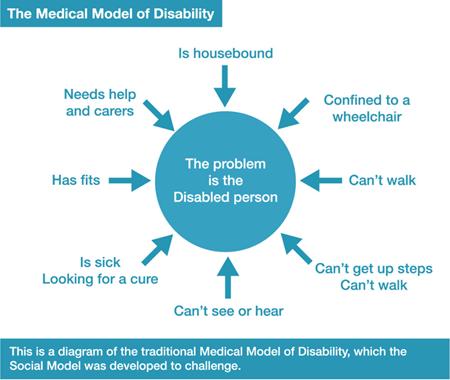

For a long time, the medical model of disability was the prevalent model for talking about disabled people This model suggests that people are disabled because of impairments or conditions they have, and suggests that they themselves are the problem It views the disability of an individual as a medical problem which needs to be prevented, cured or contained
The social model, by contrast, was developed by disabled people to identify and take action against disabled people’s oppression and exclusion It offers a way of thinking that places society as the problem, rather than disabled individuals

27
Disabled people face barriers that stop them from taking part in society in the same way as non-disabled people
There are physical barriers that disabled people face These could include things like:
● A sign that someone with a visual impairment can’t read.
● An inaccessible building without wheelchair ramps.
● A webpage with flashing animations that could trigger a seizure
There are also social barriers or attitudinal barriers, like stereotypical beliefs that non-disabled people have about disabled people. Assuming that a disabled person “can’t do” something creates a barrier for that person.
According to the social model of disability, it’s these barriers that make a person disabled Disability isn’t something that exists inside your body or your mind. It’s something that is created by an inaccessible society
“I am not disabled until I try and function in an environment which has been designed and built for, and probably by, people who are not like me” - Michèle Taylor (Director for Change, Ramps on the Moon) on the Social Model of Disability.
Sources:
The Social Model of Disability - Sense
The Social Model of Disability - Inclusion London Director for Change, Michèle Taylor explains the social model of disability on BBC 5 Live - YouTube

28
BSL ON STAGE
The first Sign Language interpreted performance was The Mousetrap in 1980 on The West End Since then, BSL on stage has become more and more commonplace There are many companies in the UK making work that embeds BSL in their productions such as Fingersmiths, Theatre Sign and Ramps on the Moon. So how does BSL in a production lift it and make it more accessible to wider audiences and performers?
“BSL is a powerful, visual language that can express so much more than words It encompasses expression, movement and visual vernacular which can benefit any performance. The increase in integrated performances not only allows access for D/deaf people at the theatre, but allows hearing audiences to experience theatre in a completely different way ” - Louise,
BSL/English Interpreter
“If I know a production has had a deaf creative on the team - whether it’s an assistant director, BSL consultant or even a deaf actor - then I know it’s going to be so much better The marketing will be more accessible (the name of the interpreter will be included, BSL-accessible flyers and reasonable show times etc) Plus, the interpreters will have had more rehearsal time so they can present better without getting tired. Even the set/lighting design will have been considered to work around placements of the interpreter and, more importantly, making sure you have the right interpreter for the performance The only way we can do this is through more training (by deaf people) so that they understand the aesthetics of making accessible work using interpreters. ” -
Jonny, Deaf Creative Access Consultant
RAMPS ON THE MOON & THE REP
Ramps on the Moon is a collaborative partnership with several theatres across the UK, along with strategic partner Graeae Theatre, which aims to enrich the stories we tell and the way we tell them by normalising the presence of deaf and disabled people both on and off stage

It started with a production of Brecht’s Threepenny Opera which featured both non-disabled and disabled company members and toured to several partner theatres, including the Birmingham Rep Here, it coincided with the venue's Brecht Festival, meaning passionate Brecht fans, who may have had no connection with disability, saw the text with a different nuance and angle, and by all accounts thoroughly enjoyed the production
From there, the Rep and other participating organisations decided they had to do more work like this and Ramps on the Moon was born
The Rep has continued to present Ramps on the Moon productions since, including The Government Inspector, The Who’s Tommy, Our Country’s Good, Oliver Twist, One Under and most recently Much Ado About Nothing As part of their mission to break into mainstream theatres, all productions are sold as part of the main programme for The Rep and are not advertised as a show for or containing a disabled cast
29
As well as the shows, each organisation has committed to a programme of organisation change including:

● Embedding Deaf and Disabled people throughout their organisation
● Putting access and inclusion on the agenda of all meetings
● Creating long term employment and training opportunities for Deaf and Disabled people
● Committing core production expenditure to the project, alongside the specific additional project funding
● Acting as a hub within its own region to disseminate experience, information and good practice
Sources:
Home - Ramps (rampsonthemoon.co.uk)
Houston, we have a problem: Ramps on the Moon's mission for representation | Drama And Theatre
Ramps On The Moon | Birmingham Rep (birmingham-rep.co.uk)


30
DISABILITY ON STAGE TIMELINE
1967
US - National Theatre of the Deaf - 'oldest theatre company in the US' combines ASL with spoken language
1976
Access All Areas - a collaboration with Central School of Speech and Drama - offering a diploma in Performance Making for learning disabled/autistic adults
1980s
Saw the disability arts and culture movement - shift to seeing disabled artists onstage, championing access and representation of disabled people in society (not just theatre, but in music, film and TV)
1980s
Graeae Theatre Company founded in East London - massive contribution to disabled theatre, offering work for disabled artists/playwrights/directors, creating world-class theatre
1997
Maria Oshodi and a group of professional visually impaired artists founded the company Extant to redress invisibility of blind and partially sighted artists and explore new creative territories
2001
Extant produced the first ever use of audio description and simultaneous language translation in a premier UK tour of Croatia’s New Life Theatre, in their production Zeros and Nils by D I Harms
2005
Blue Apple Theatre - founded in Winchester, UK - actors with intellectual disabilities. Performed in May 2012 - the first re-imagined Hamlet, with Downs Syndrome performers. Continues to make theatre and train actors in their training programme for actors with intellectual disabilities, Blue Core
2008

Aegis Productions was established by Athena Stevens, an American actor, writer and director, born with athetoid cerebral palsy After struggling to cope with the lack of accessibility in theatres when trying to rehearse, Athena decided to establish her own production company with its own rehearsal space Scrounger, which premiered at the Finborough, was based on Stevens’ own experiences of being a wheelchair user
2015
Ramps on The Moon initiative started, pairing with New Wolsey Theatre, Birmingham Rep, Nottingham Playhouse, Theatre Royal Stratford East, Sheffield Theatres and Leeds Playhouse - embedding disabled performers and access within the arts as part of their usual programming.
2023
Birmingham Rep stages Of Mice and Men with the character Lennie being played by a learning disabled actor for the first time.
31


P E T lay 32

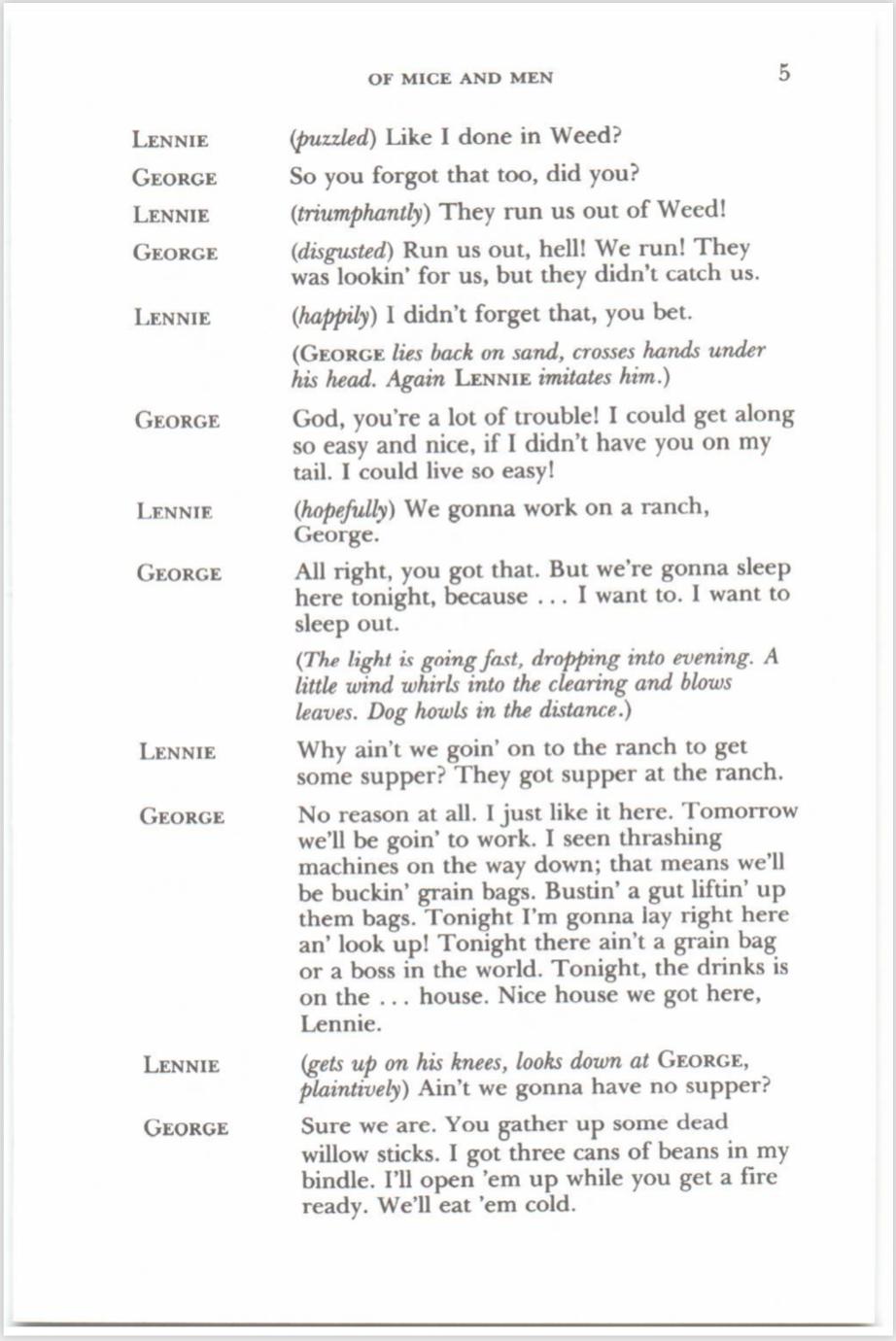
33

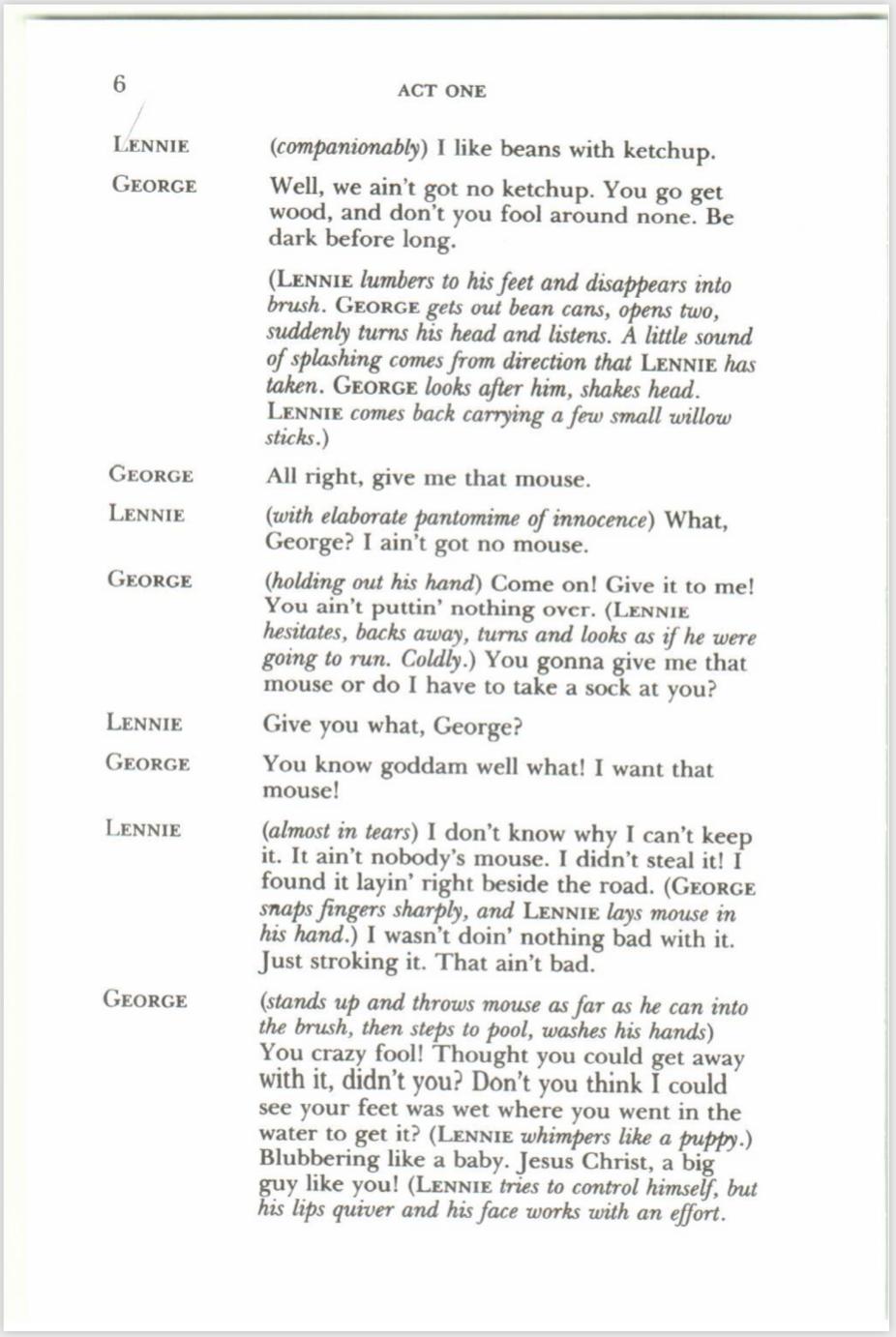
34


35


E T 36


37

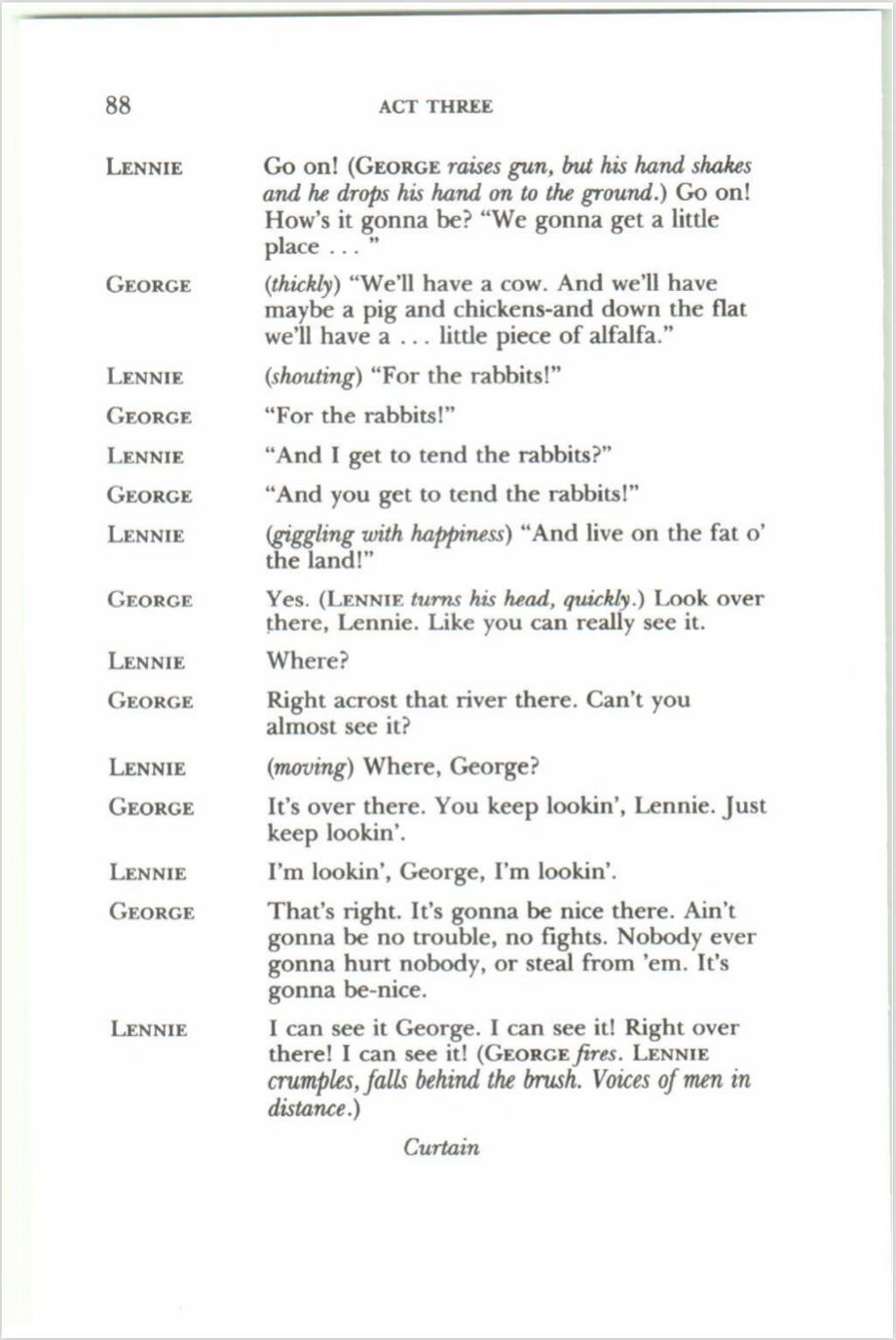
38


E T 39


40

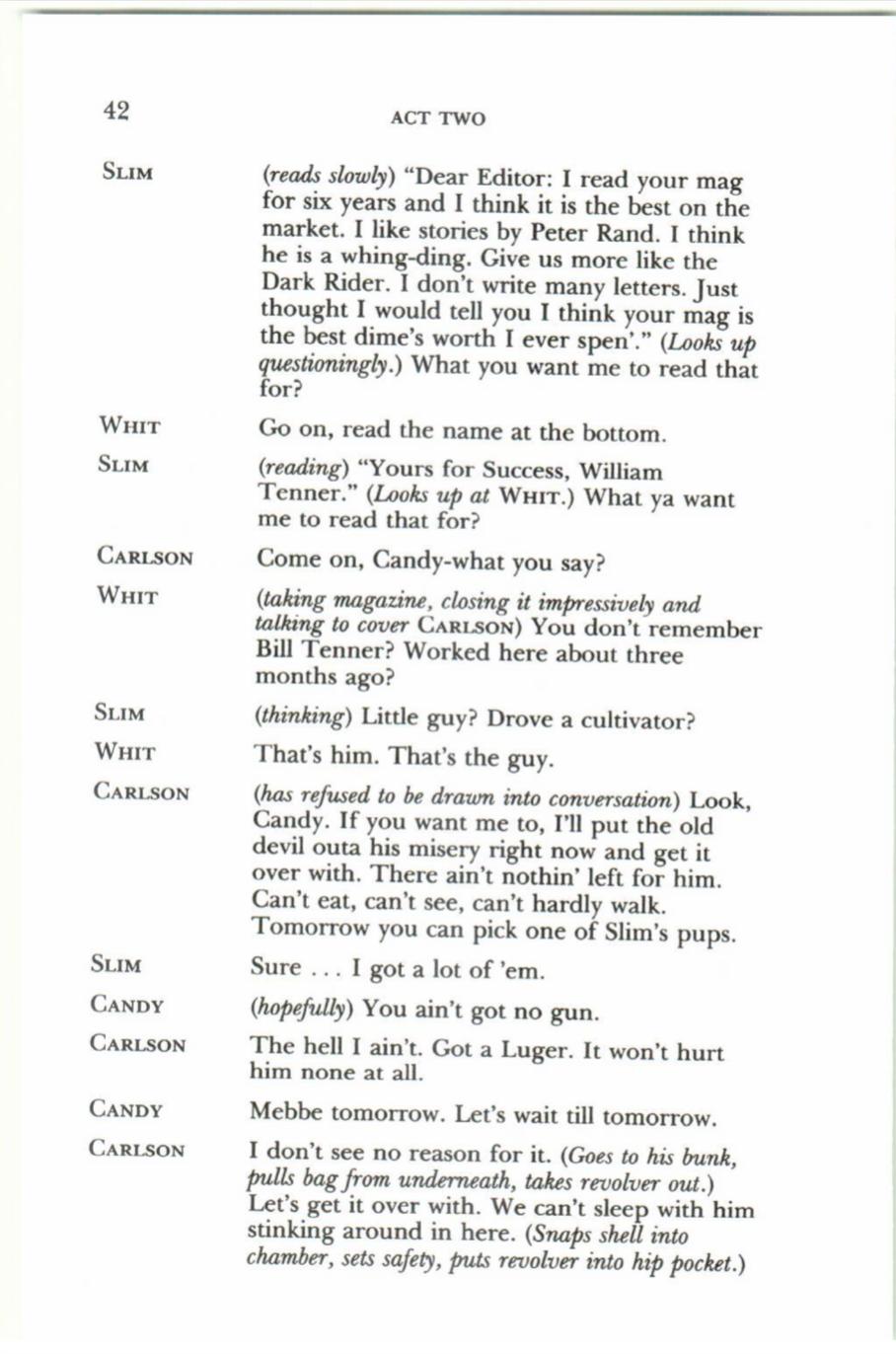
41


42
PSHE LEARNING OUTCOMES
The lesson plans in this pack link to the following PSHE learning outcomes:
KS3
Health and Wellbeing
H4 - Simple strategies to help build resilience to negative opinions, judgements and comments

H6 - How to identify and articulate a range of emotions accurately and sensitively, using appropriate vocabulary
H8 - The link between language and mental health stigma, and to develop strategies to challenge stigma, myths and misconceptions associated with help-seeking and mental health concerns
H9 - Strategies to understand and build resilience, as well as how to respond to disappointments and setbacks
Relationships
R1 - About different types of relationships, including those within families, friendships, romantic or intimate relationships and the factors that can affect them
R3 - About the similarities, differences and diversity among people of different race, culture, ability, sex, gender identity, age and sexual orientation
R9 - To clarify and develop personal values in friendships, love and sexual relationships
R10 - The importance of trust in relationships and the behaviours that can undermine or build trust
R11 - To evaluate expectations about gender roles, behaviour and intimacy within romantic relationships
R13 - How to safely and responsibility form, maintain and manage positive relationships, including online
R16 - To further develop the skills of active listening, clear communication, negotiation and compromise
R18 - To manage the strong feelings that relationships can cause (including sexual attraction)
R19 - To develop conflict management skills and strategies to reconcile after disagreements
R22 - The effects of change, including loss, separation, divorce and bereavement; strategies for managing these and accessing support
R37 - The characteristics of abusive behaviours, such as grooming, sexual harassment, sexual and emotional abuse, violence and exploitation; to recognise warning signs, including online; how to report abusive behaviours or access support for themselves or others
R38 - To recognise bullying, and its impact, in all its forms; the skills and strategies to manage being targeted or witnessing others being bullied
43
R39 - The impact of stereotyping, prejudice and discrimination on individuals and relationships
R40 - About the unacceptability of prejudice-based language and behaviour, offline and online, including sexism, homophobia, biphobia, transphobia, racism, ableism and faith-based prejudice
R41 - The need to promote inclusion and challenge discrimination, and how to do so safely, including online
R43 - The role peers can play in supporting one another to resist pressure and influence, challenge harmful social norms and access appropriate support
R47 - Motivations, misconceptions and consequences of carrying weapons and strategies for managing pressure to carry a weapon
KS4
Health and Wellbeing
H2 - How self-confidence, self-esteem, and mental health are affected positively and negatively by internal and external influences, and ways of managing this

H4 - Strategies to develop assertiveness and build resilience to peer and other influences that affect both how they think about themselves and their health and wellbeing
H5 - The characteristics of mental and emotional health; to develop empathy and understanding about how daily actions can affect people’s mental health
Relationships
R1 - The characteristics and benefits of strong, positive relationships, including mutual support, trust, respect and equality
R3 - To respond appropriately to indicators of unhealthy relationships, including seeking help where necessary
R9 - To recognise, clarify and if necessary challenge their own values and understand how their values influence their decisions, goals and behaviours
R10 - To understand a variety of faith and cultural practices and beliefs concerning relationships and sexual activity; to respect the role these might play in relationship values
R11 - Strategies to manage the strong emotions associated with the different stages of relationships
R12 - To safely and responsibly manage changes in personal relationships including the ending of relationships
R13 - Ways to manage grief about changing relationships including the impact of separation, divorce and bereavement; sources of support and how to access them
R28 - To recognise when others are using manipulation, persuasion or coercion and how to respond
R31 - The skills and strategies to respond to exploitation, bullying, harassment and control in relationships
44
R34 - Strategies to challenge all forms of prejudice and discrimination



45















































